// tAI // Cultures (from the show Elegiac Falls – The Human Tissue Repository)


the journal of the Institute of Idle Curiosity for Elements of Seduction

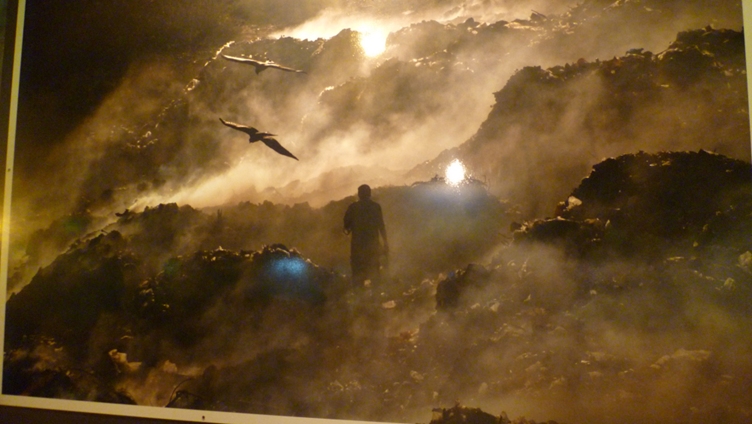
What is a society? Is it the set of sophisticated social, economic and political methods and structures we set up to organise ourselves today? Or is it the assemblage of temporary human ethic and aesthetic encounters in forests, bars, streets and meeting rooms, continuously dissolving with the promise to coagulate again? And what if those modern methods and structures, created through emancipatory resistance against feudal and religious powers, make up the civilised problem in itself, being nothing better than the powers they conquered?
See the event here.
See the slides of the presentation here.
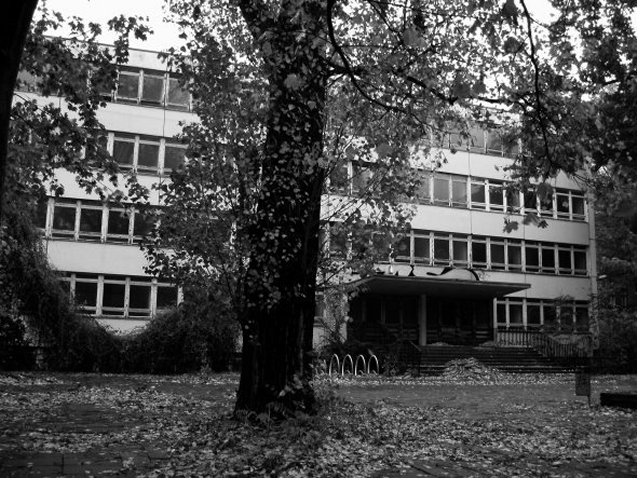
The Institute of Idle Curiosity for Elements of Seduction is a research institute established in 2006. It is built on the (fragmented) legacy of the historical Institut Weich-Fehler für kritische Philosophie der Psychologie that existed from 1924 until 1952.
The research programme of the Institute of Idle Curiosity for Elements of Seduction is concerned with the way human beings deal with the uncertain, the ambiguous, the complex and the unknown in social and political interaction. The basis of the research programme is a critical theory that targets strategies of pseudo-tolerance, conformism, positivism, profitism and populism in social, cultural, scientific, economic or political contexts, but the programme essentially wants to go beyond critical analysis as such. The aim is to research alternative ‘ideological’ human interaction modes that go beyond those traditionally leaning on the proclaimed values of social, cultural and ethnic collective identity, scientific truth, free competition in the market and competition over ideologies in politics. These traditional interaction modes shape our society today, and while the dominant perception is that they are essential in the way they provide certainty and safety and the means for social recognition and self-expression as proclaimed conditions for societal and individual well-being, the argument is that they are actually stimulating pseudo-tolerance, conformism, positivism, profitism and populism themselves. As a consequence, these traditional interaction modes remain to serve the various social, cultural, scientific, economic and political non-overlapping comfort zones of power and profit that steer society today which makes them to hinder rather than facilitate dealing with our unavoidable human individual angst on the one hand and with the various social, ecological and economic malaises on the other hand.
Alternative interaction modes, the institute argues, embrace the uncertain, the ambiguous, the complex and the unknown as inherent characteristics of our co-existence and life. They stimulate and enable the individual to nurture an idle curiosity ‘at the peripheries of social cohesion’ in both private and public interactions and provide at the same time aesthetical consolation that comes with the melancholic awareness of the impossibility of pure beauty, unity and harmony, and of the inevitability of imperfection, decadence and uncertainty.
The LifeWorldTheories Labs of the Institute of Idle Curiosity for Elements of Seduction develop the theory behind these alternative human interaction modes and make it to gradually materialise in a series of texts aimed to serve internal and external reflection. Based on these insights, the other departments of the Institute explore these interaction modes through various media, ranging from soundscapes, music and film (the TRAGIC REALIST FICTION collective) over installations of physical artefacts, models and schemes (the idle-city-else labs) up to text and discursive interventions (the Academia and the PhɅAct Collective). The Arts Institute with its three satellite departments (the Happening Hotel, the Art Archives and the Mono Theatre) serve as the liaison of the Institute with the outside world and are open to the public on specific moments.
See more information on the Institute and on its departments on the About page, the website of its back office www.idle-city-else.org or check the page with contact information and instructions for visits.
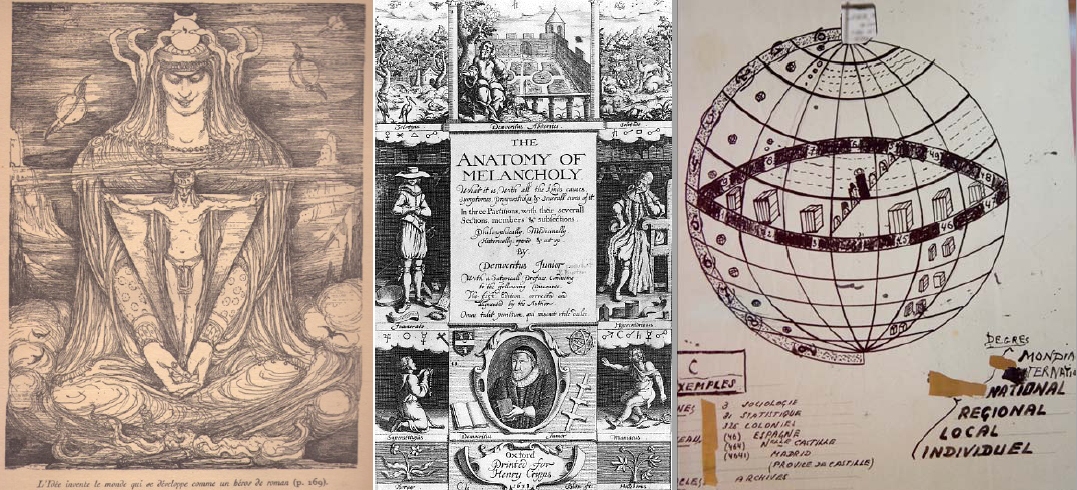
Revisiting Melancholy
Robert Burton published the first edition of his magnum opus ‘The Anatomy of Melancholy’ in 1621. His aim was to write a definite and comprehensive study of the meaning of melancholy. His book promised to explain ‘.. What it is: With all the Kinds, Causes, Symptomes, Prognostickes, and Several Cures of it. In Three Maine Partitions with their several Sections, Members, and Subsections. Philosophically, Medicinally, Historically, Opened and Cut Up…’. What looks at first sight as an exhaustive analysis of melancholy as a disease to be cured is in fact much more. Burton uses melancholy as a perspective to inquire into all human emotions and thought. In that sense, the Anatomy can also be seen as a total encyclopaedia of the human condition of that time.
Our modern times may now inspire us to re-read that meaning for the contemporary human condition, although not through a systematic re-interpretation of the encyclopaedic classes and categories, but on the basis of one simple idea….
Melancholy is not depression neither pessimism. Drawing on interpretations from the pre-modern Romantic and Decadent Era, it can be described as the aesthetical consolation that comes with the awareness of the impossibility of pure beauty, unity and harmony, and of the inevitability of imperfection, decadence and uncertainty. The idea however is that melancholy is not a detached but an ethical experience, and that this became apparent with modernity: melancholy is the human condition resulting from a deliberate awareness of the limits to rational instrumental reason in a context of social appeal. That social appeal may either be love, friendship or lust, or social or political engagement. The implications of modernity rendered melancholy with a social meaning: the impossibility of pure beauty, unity and harmony, and of the inevitability of imperfection, decadence and uncertainty, is not experienced by way of detached observation, but in a reflexive way in social interaction.
In this vision, the ‘end state’ of melancholy is still aesthetical consolation. But that state is not passive, as it arises from an ethical demand. In its recognition of the intrinsic ambiguity of human interaction and of the inherent complexity of social organisation and cohabitation, it is an intellectual withdrawal from the delusion of grandeur of a society obsessed with rationality, security, efficiency, predictability and competition. In its disdain for complacency, it is a consolatory practice of leaving the comfort zones constructed around strategies of conformism, positivism, populism and profitism. But as an active state of resignation, melancholy is not evasive. Its decadence is in the eyes of the conformists. Layered on reflexivity as an ethical experience, it feels the anger towards the detached. And as a meta-state of concern, it is aware of the fragile potential of intellectual solidarity among the capable, and of the melancholy of the capable as vulnerable.
Melancholy is practicing the aesthetics of imperfection, decadence and uncertainty, although with a constant awareness of – and care for – the possible of human possibilities.
Text: Gaston Meskens
Workshop at the Rijksakademie, Wednesday 19 October 2016, 11am – 1pm
Introductory lecture:
Melancholies of Modernity: on hope and despair in the social activism of Gaston de Pawlowski and Paul Otlet
Gaston Meskens
Confronted today with its adverse consequences, modernity is traditionally characterised as the era of a growing obsession with rationality, security, efficiency, predictability and competition. That picture is incomplete, as it overlooks the early signs of ‘reflexivity as an ethical experience’ of socially-critical individuals and groups, and of the state of melancholy in which they operated. Understanding modernity is understanding the melancholy of resistance against modernity in modernity.
See the slides of the lecture here: workshop-on-melancholy
Discussion on the value of melancholy in art and science today.
Today, contemporary science, although still locked into its modernist ‘mandate’ to unveil and deliver the truth, often faces total uncertainty while under pressure by politics and the market to deliver advice. As an introduction to the discussion, a case study will illustrate how science, in these situations, cannot but work in a state of ‘enlightened resignation’, despite of the quest for clear advice. The fact of uncertainty becomes a truth in itself.
Lectures
The Politics of Hypothesis
Gaston Meskens
See the slides of the lecture here: the-politics-of-hypothesis
Bringing it all together
Gaston Meskens
See the slides of the lecture here: bringing-it-all-together
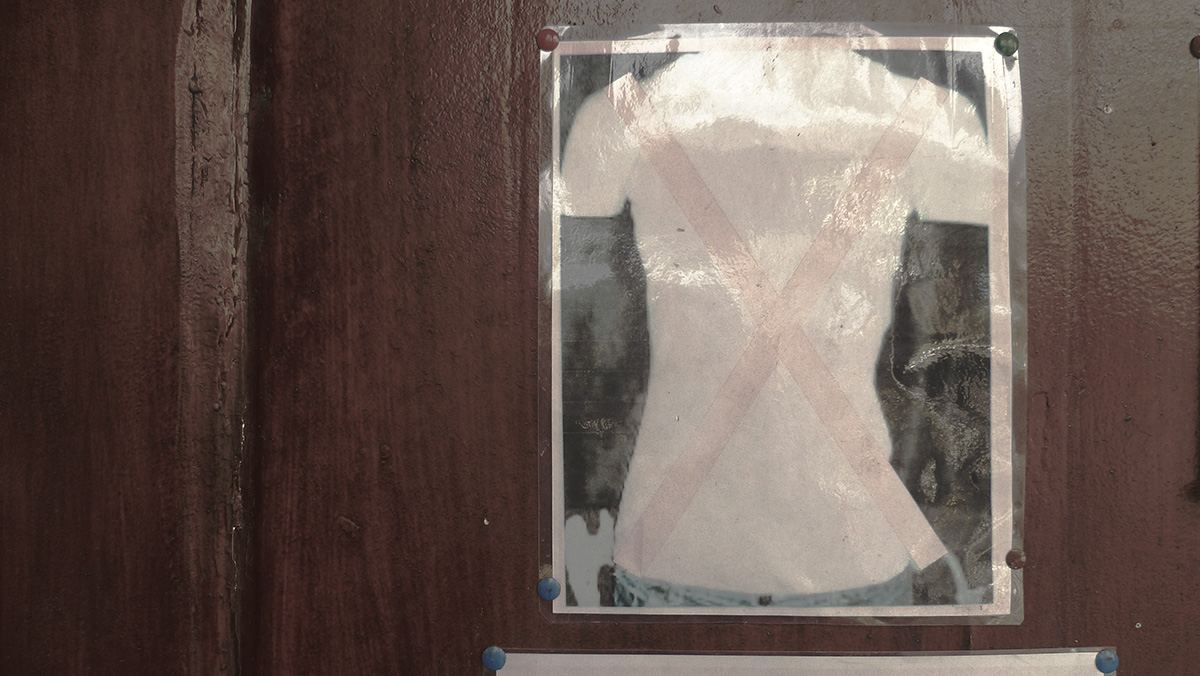
[Your Absence was Noticed] > expo and performance night
From 20 to 27 August 2016, the 23rd floor of the Antwerp – Tower is occupied by artists, activists and philosophers alike. In discussions and through photography, video, performance, painting, drawing and installation art, they work around the idea of melancholy as an activist stance against the strategies of conformism, positivism, populism and profitism that rule the world today. All work accumulates in a happening on Friday 26 August.
With contributions from
Özge Akarsu – Tim Boers – Juliane Borths – Koen Boyden – Sarah de Graeve – Joke Druyts – Sam Geuens – Kris Gevers – Wataru Iwata – Nico Jacobs – Klaas Janszoons – Lennart Langanki – Eef Lommelen – Luciano Margo – Céline Mathieu – Inge Meijer – Gaston Meskens – Faryda Moumouh – Paul-Ruben Mundthal – Agnes Nagygyörgy – Torri Nickmans – Mr. Swolfs – Isabel Tesfazghi – Narcisse Tordoir – Frederik Van den Eynde – Dennis Van der Planken – Myrthe van der Mark – Britt Zoë Van Dongen – Petra Van Dorpe – Filip Van Kerckhoven – Hans Verhaegen
Venue
Antwerp Tower 23rd floor, De Keyserlei 5, 2018 Antwerp
Expo
Opening: Saturday 20 August, 18h00 – 22h00
opening hours
Saturday 20 Aug, 18h00 – 22h00
Sunday 21 Aug, 14h00 – 22h00
Monday 22 Aug, 14h00 – 22h00
Tuesday 23 Aug, 14h00 – 22h00
Wednesday 24 Aug, 14h00 – 22h00
Thursday 25 Aug, 14h00 – 22h00
Friday 26 Aug, 14h00 – 02h00
Saturday 27 Aug, 14h00 – 18h00
Performance night on Friday 26 August
20h00 – talking [sex], an open workshop (Dutch/English) hosted by Eef Lommelen
21h30 – performance by the collective CMMC
22h00 – soundscapes & poetry (soundscapes performed by TRAGIC REALIST FICTION and friends, with skyline view and an open mike for everyone who wants to recite a poem or express a thought)
Download and spread the flyer of the event.
This happening is part of the 2nd World Conference on the Value of Melancholy in Times of Cheap Commitment, organised and curated by Gaston Meskens and Juliane Borths for the Institute of Idle Curiosity for Elements of Seduction.
Revisiting Melancholy
Robert Burton published the first edition of his magnum opus ‘The Anatomy of Melancholy’ in 1621. His aim was to write a definite and comprehensive study of the meaning of melancholy. His book promised to explain ‘.. What it is: With all the Kinds, Causes, Symptomes, Prognostickes, and Several Cures of it. In Three Maine Partitions with their several Sections, Members, and Subsections. Philosophically, Medicinally, Historically, Opened and Cut Up…’. What looks at first sight as an exhaustive analysis of melancholy as a disease to be cured is in fact much more. Burton uses melancholy as a perspective to inquire into all human emotions and thought. In that sense, the Anatomy can also be seen as a total encyclopaedia of the human condition of that time.
Our modern times may now inspire us to re-read that meaning for the contemporary human condition, although not through a systematic re-interpretation of the encyclopaedic classes and categories, but on the basis of one simple idea….
Melancholy is not depression neither pessimism. Drawing on interpretations from the pre-modern Romantic and Decadent Era, it can be described as the aesthetical consolation that comes with the awareness of the impossibility of pure beauty, unity and harmony, and of the inevitability of imperfection, decadence and uncertainty. The idea however is that melancholy is not a detached but an ethical experience, and that this became apparent with modernity: melancholy is the human condition resulting from a deliberate awareness of the limits to rational instrumental reason in a context of social appeal. That social appeal may either be love, friendship or lust, or social or political engagement. The implications of modernity rendered melancholy with a social meaning: the impossibility of pure beauty, unity and harmony, and of the inevitability of imperfection, decadence and uncertainty, is not experienced by way of detached observation, but in a reflexive way in social interaction.
In this vision, the ‘end state’ of melancholy is still aesthetical consolation. But that state is not passive, as it arises from an ethical demand. In its recognition of the intrinsic ambiguity of human interaction and of the inherent complexity of social organisation and coexistence, it is an intellectual withdrawal from the delusion of grandeur of a society obsessed with rationality, security, efficiency, predictability and competition. In its disdain for complacency, it is a consolatory practice of leaving the comfort zones constructed around strategies of conformism, positivism, populism and profitism. But as an active state of resignation, melancholy is not evasive. Its decadence is in the eyes of the conformists. Layered on reflexivity as an ethical experience, it feels the anger towards the detached. And as a meta-state of concern, it is aware of the fragile potential of intellectual solidarity among the capable, and of the melancholy of the capable as vulnerable.
Melancholy is practicing the aesthetics of imperfection, decadence and uncertainty, although with a constant awareness of – and care for – the possible of human possibilities.

Programme
The draft conference programme is now available! Check it out: conference programme.
Programme overview
Revisiting Melancholy
Robert Burton published the first edition of his magnum opus ‘The Anatomy of Melancholy’ in 1621. His aim was to write a definite and comprehensive study of the meaning of melancholy. His book promised to explain ‘.. What it is: With all the Kinds, Causes, Symptomes, Prognostickes, and Several Cures of it. In Three Maine Partitions with their several Sections, Members, and Subsections. Philosophically, Medicinally, Historically, Opened and Cut Up…’. What looks at first sight as an exhaustive analysis of melancholy as a disease to be cured is in fact much more. Burton uses melancholy as a perspective to inquire into all human emotions and thought. In that sense, the Anatomy can also be seen as a total encyclopaedia of the human condition of that time.
Our modern times may now inspire us to re-read that meaning for the contemporary human condition, although not through a systematic re-interpretation of the encyclopaedic classes and categories, but on the basis of one simple idea….
Melancholy is not depression neither pessimism. Drawing on interpretations from the pre-modern Romantic and Decadent Era, it can be described as the aesthetical consolation that comes with the awareness of the impossibility of pure beauty, unity and harmony, and of the inevitability of imperfection, decadence and uncertainty. The idea however is that melancholy is not a detached but an ethical experience, and that this became apparent with modernity: melancholy is the human condition resulting from a deliberate awareness of the limits to rational instrumental reason in a context of social appeal. That social appeal may either be love, friendship or lust, or social or political engagement. The implications of modernity rendered melancholy with a social meaning: the impossibility of pure beauty, unity and harmony, and of the inevitability of imperfection, decadence and uncertainty, is not experienced by way of detached observation, but in a reflexive way in social interaction.
In this vision, the ‘end state’ of melancholy is still aesthetical consolation. But that state is not passive, as it arises from an ethical demand. In its recognition of the intrinsic ambiguity of human interaction and of the inherent complexity of social organisation and coexistence, it is an intellectual withdrawal from the delusion of grandeur of a society obsessed with rationality, security, efficiency, predictability and competition. In its disdain for complacency, it is a consolatory practice of leaving the comfort zones constructed around strategies of conformism, positivism, populism and profitism. But as an active state of resignation, melancholy is not evasive. Its decadence is in the eyes of the conformists. Layered on reflexivity as an ethical experience, it feels the anger towards the detached. And as a meta-state of concern, it is aware of the fragile potential of intellectual solidarity among the capable, and of the melancholy of the capable as vulnerable.
Melancholy is practicing the aesthetics of imperfection, decadence and uncertainty, although with a constant awareness of – and care for – the possible of human possibilities.
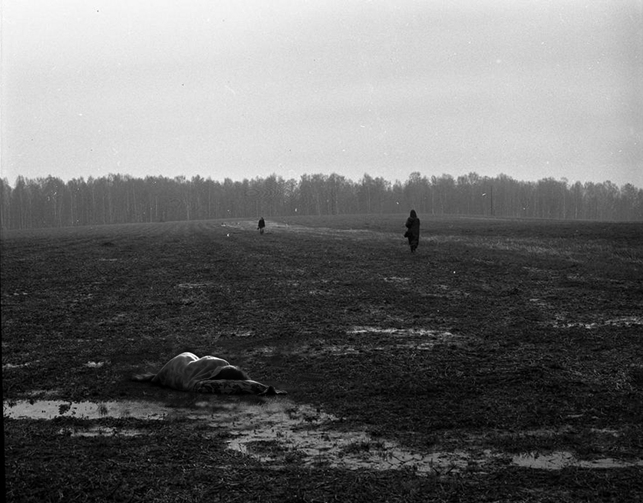
The fate of activism through art is that, in order for it to generate controllable social or political effect, it would need to become social work or politics itself. On the other hand, the artistic act of critical withdrawal will eventually appeal to a non-conformist audience, but it will not bother those cynically detached subjects of critique. The ‘impossible position’ of artistic activism is not that of a dilemma between withdrawal or contribution; it is that of a dwelling in a twilight zone between those two positions. In a constant awareness of the conditions and implications of agency, it is a state of hyper-reflexivity that, at the same time, also works as a ‘critical mirror’ towards the cynically detached. As a deliberate state of engagement and an active state of resignation, that position at the periphery of the artist’s comfort zone is also ultimately melancholic.
Friday 27 May 2016, 11:00 – 13:00
Workshop initiated and moderated by Gaston Meskens
See the slides of the introductory lecture here: the-politics-of-ambiguity-27-may-2016-gaston-meskens
Questions for the discussion:
“… If politics have become performative, so too has knowledge – in other words, you have to share what you know. Researchers and scientists who feel a sense of political urgency to disseminate their findings might use the skill sets of symbolic manipulation and performance in order to get their message out. Similarly, we find numerous artists and collectives who deploy aesthetic strategies to spread their message. For example, Ala Plástica’s research‐based environmental activism focuses on the damage caused when a Shell Oil tank collided with another cargo ship in the Rio de la Plata. Over 5300 tons of oil spilled into this major Argentine river. Using photography and drawings, and working with local residents to conduct surveys, the collaborative deploys techniques of socially engaged art in order to bring this issue to light. …”
(Nato Thompson in ‘Living as Form –Socially Engaged Art from 1991 –2011’ p 24)
Q What is critical socially engaged art ‐hereafter called activist art –and how does the presupposed political function of its ‘aesthetic strategies’ works within and outside of the artistic realm?
Q What is the ‘added value’ of activism through art?
Reflecting on the art practice referred to in the text fragment above, one might wonder why this example of socially engaged artis characterised as art and why and how this artistic intervention is then different from ‘normal’ activism. While today more and more artists profile themselves as social worker or as political activist, the question of what the ‘added value’ of activism through art would be remains largely untreated. The argument that motivates this text and dialogue initiative is that reflecting on that question and formulating answers to it is relevant, as well for art as for political activism as such, and this not only for the example referred to above, but also for other contexts (countering social and political oppression of women and minority groups, acting against social and ecological exploitation by big corporations, revolt against political or religious dictators, questioning the justification of risk‐inherent technologies such as genetic modification or nuclear energy, …). In other words: the discussion on art as activism is not exhausted yet. On the contrary. The following reflections may suggest in which way and for what reasons that discussion is still relevant.
>> As suggested by the text fragment, also scientists and politicians apply techniques of ‘symbolic manipulation and performance’ to underpin and strengthen their messages. However, in the case of science and politics this practice would by definition be considered as suspicious while in the case of art it isbydefinition not. On the other hand, while science, politics and art may formulate arguments about the same reality, the example suggests that art, in the interest of its case of concern, wouldalso need to be ‘objective’ to a certain degree in order to make a ‘credible’ and appealing point.
Q What is the value and meaning of objectivity and credibility in activist art and how do they differ from objectivity and credibility in science and politics?
>> The local residents living around the Rio de la Plata see the artist’s work (the photos, drawings and surveys) as a tool that would need to help them in their fight for justice with respect to the pollution that endangers their health and the environment. For the artist, the produced work obviously also figures inthe own art practice. It is part of what will become a ‘documented performance’ of which the documentation will end up in portfolios, art exhibitions and art books. Very seldom, this kind of documentation mentions in which way the artistic intervention has actually contributed to challenging and eventually solving the social issue; a concern that is essential for the local residents.
Q To what extent is the activist artist co‐responsible for the pursuit of social justice in the specific context of critical engagement? And when does the artist, in that engagement, transgresses the boundary between art and politics? What is that boundary?
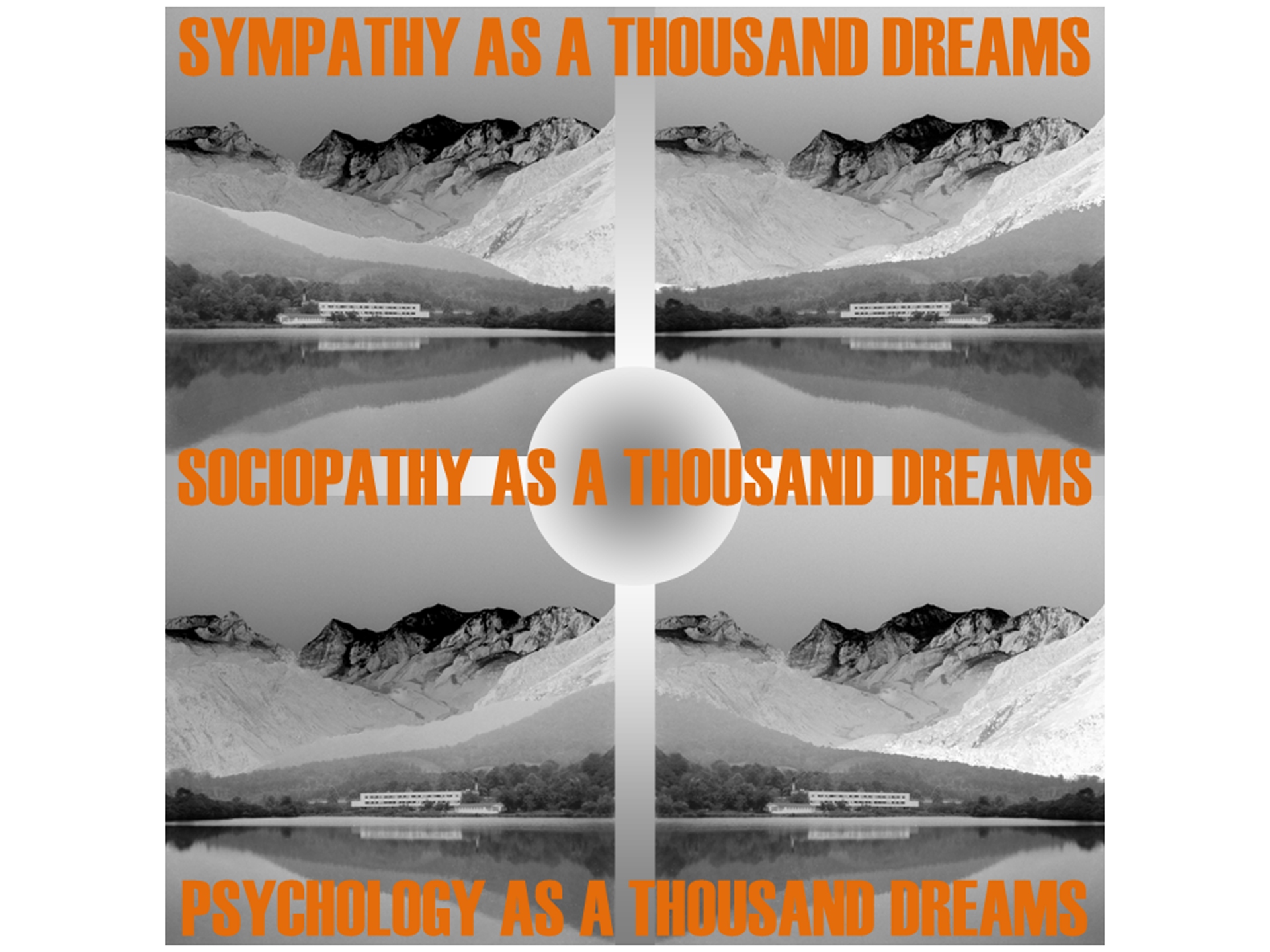
Opening 29 April 2016 6pm
Praetoria, Pretoriastraat 38, 2600 Berchem, Antwerpen, Belgium
Open Sat / Sun 2 – 6pm from 30 April to 22 May 2016
Artist talk on Friday 6 May 2016 at 8:30pm
Het Institut Weich-Fehler für kritische Philosophie der Psychologie (1924 – 1952).
In 1924 richtten de filosofen Line Weich en Ulrich Fehler het Institut Weich-Fehler für kritische Philosophie der Psychologie op. Het onderzoeksprogramma van het Instituut wou een filosofisch tegengewicht vormen tegen de rationalisering en de verwetenschappelijking van de psychologie die zich toen begon te ontwikkelen. Het instituut nam zijn intrek in een leegstaande fabriek in Altenberg, een kleine gemeente ten zuiden van Dresden, tegen de grens met Tsjechië. Het instituut gebruikte zowel Duits als Engels als werktaal, en al snel verzamelde zich een internationale groep van sociale en humane wetenschappers rond Weich en Fehler. In de eerste jaren na de oprichting werkten ze samen een onderzoeksprogramma uit dat vermaard werd voor de alternatieve kijk op psychologie.
Volgens Weich en Fehler kan de mens gezien worden als een reflectieve geest ‘opgesloten’ in een natuurlijk lichaam. Als mens reflecteren we over onszelf en zijn we ook in staat om dingen te doen tegen onze natuur in, en daarom kan de mens ook beschouwd worden als een ‘eindtoestand’ in de evolutie. Daarbij komt ook nog dat onze mogelijkheden om ons betekenisvol uit te drukken ‘primitiever’ zijn dan onze capaciteiten voor reflectieve interpretatie. We kunnen elkaar nooit volledig begrijpen omdat we geen ‘toegang’ hebben tot de geest van de ander. Menselijke interactie en communicatie verloopt via metaforen en symbolen waarvan we nooit kunnen weten hoe de ander ze ‘aanvoelt’ en begrijpt. Daarom kunnen mensen ook niet in bepaalde typologieën ingedeeld worden maar zijn we allemaal unieke wezens. Weich en Fehler stelden dat de onvermijdelijke ambiguiteit waarmee elke omgang en communicatie tussen mensen gepaard gaat niet noodzakelijk een bron van onbehagen moet zijn, integendeel. Het respecteren van elkaars ‘onvermogen’ om rationeel en duidelijk te zijn over alles wat ons behaagt, opwindt, beangstigt, beklemt, verblijdt of ontroert maakt net een ‘esthetiek van de ambiguiteit’ mogelijk die als de ware zin van het (samen)leven kan beschouwd worden.
De sociale en humane wetenschappers van het Institut Weich-Fehler zagen het als hun taak om die visie op de mens en de samenleving filosofisch uit te werken, als tegengewicht tegen een psychologie die de mens reduceert tot een ééndimensionaal type en een instrument ten dienste van zelfgenoegzame politieke en economische macht. De wetenschappers begonnen echter in te zien dat hun argumenten geen weerklank vonden in de rest van de academische wereld, en de onzekerheid in verband met de kernideeën van het onderzoeksprogramma nam toe omdat ze ook nooit zeker waren dat ze elkaar goed begrepen. Net voor de tweede wereldoorlog beslisten Weich en Fehler dat de dingen radicaal anders moesten. Ze doekten het Instituut op en verhuisden met het gehele team naar Zwitserland. Ze namen hun intrek in de leegstaande gebouwen van een vroegere kunstacademie, aan de voet van de Aiguilles Rouges d’Arolla, met zicht op het Lac Des Dix . Daar, omringd door de bergen en afgesloten van de rest van de maatschappij, probeerden ze een nieuwe wending aan hun onderzoek te geven. De focus bleef filosofisch, maar ze begonnen te experimenteren via kunst.
Op een dag in september in 1952 ontspon er zich tijdens de gewone vergadering van de raad van bestuur andermaal een discussie over het voortbestaan van het instituut. De raad van bestuur pleitte nogmaals voor een definitieve heroriëntatie van het onderzoeksprogramma, meer in lijn met de algemene wetenschappelijke trend. In de Verenigde Staten was net de eerste versie van de Diagnostic and Statistical Manual of Mental Disorders gepubliceerd, en de raad wees erop dat het meer dan ooit het moment was om mee te dingen naar onderzoeksfondsen van commerciële sponsors en de overheid. Line Weich en Ulrich Fehler weigerden die dag opnieuw om in te gaan op de eis van de raad, en ze kondigden daarop het definitieve einde van het bestaan van het Institut für kritische Philosophie der Psychologie aan.
De wetenschappers trokken weg en de gebouwen werden al snel daarna ontruimd. Line Weich en Ulrich Fehler namen elk een deel van de bibliotheek en de duizenden onderzoeksartefacten mee, en de rest raakte verspreid en grotendeels verloren. Ulrich Fehler keerde terug naar zijn geboortestad Berlijn, hield zich bezig met schrijven en overleed in 1961. Line Weich trok op uitnodiging van New York University naar de Verenigde Staten om er een leerstoel in de filosofie op te nemen. Ze overleed daar in 1972. De onderzoeker F.K.A. Fritzsch was net als de meeste van zijn collega’s gefrustreerd en verbitterd door de gang van zaken en nam zijn collectie schilderijen niet mee bij zijn verhuis naar Poitiers. In ons onderzoek naar de geschiedenis van het instituut trachten we ook zo veel mogelijk originele onderzoeksartefacten terug te vinden, en we konden de schilderijen van Fritzsch terugvinden in de stockageruimte van een veilinghuis in Montreux. Ze worden in deze tentoonstelling voor de eerste maal getoond, samen met een selectie onderzoeksartefacten uit de collectie van Line Weich en Ulrich Fehler.
Gaston Meskens, Kris Gevers, 29 April 2016
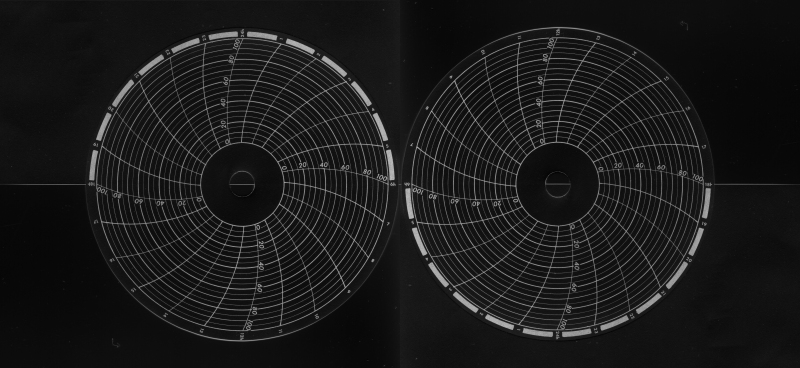
Opening Friday 29 April 2016, 6 – 11pm
The AnteRoom, serving as LAMART OFFSPACE, Kattenberg 93, 2140 Borgerhout – Antwerp
Open 29 april – 15 May 2016 on Saturday and Sunday from 2 to 6pm
See also www.lamart.be
The research programme of the Institute of Idle Curiosity for Elements of Seduction is concerned with the way human beings deal with the uncertain, the complex and the unknown in social and political interaction. The basis of the research is a critical theory that targets strategies of positivism, populism and conformism in social, cultural, scientific, economic or political contexts, but the programme essentially wants to go beyond critical analysis as such. The aim is to research alternative human interaction modes that go beyond the traditional confirmative patterns of our current co-existence. The Institute claims that the human being would in principal be able to nurture an idle curiosity ‘at the peripheries of social cohesion’, and live an alternative life inspired by the aesthetics of ambiguity in private social interactions and by the ethics of transparency in public political interactions.
The Institute of Idle Curiosity for Elements of Seduction was officially established in April 2006, after a dark period of disorder, doubt, dysfunctionality and chaos. Over the last 10 years, many people have come to the Institute to wander, reflect, drink and talk. Some stayed, others left again. But they will come back.
On the occasion of the 10th anniversary of the Institute, the AnteRoom opens its doors for an exclusive insight into the daily life at the Institute. The public will have a unique opportunity to see research artefacts and documents that normally never leave the archives. In addition, a photo screening specially made for this occasion will show scenes from the life of the researchers that were never shown before. The soundtrack with the screening was created by TRAGIC REALIST FICTION (Juliane Borths and Gaston Meskens) especially for this occasion.
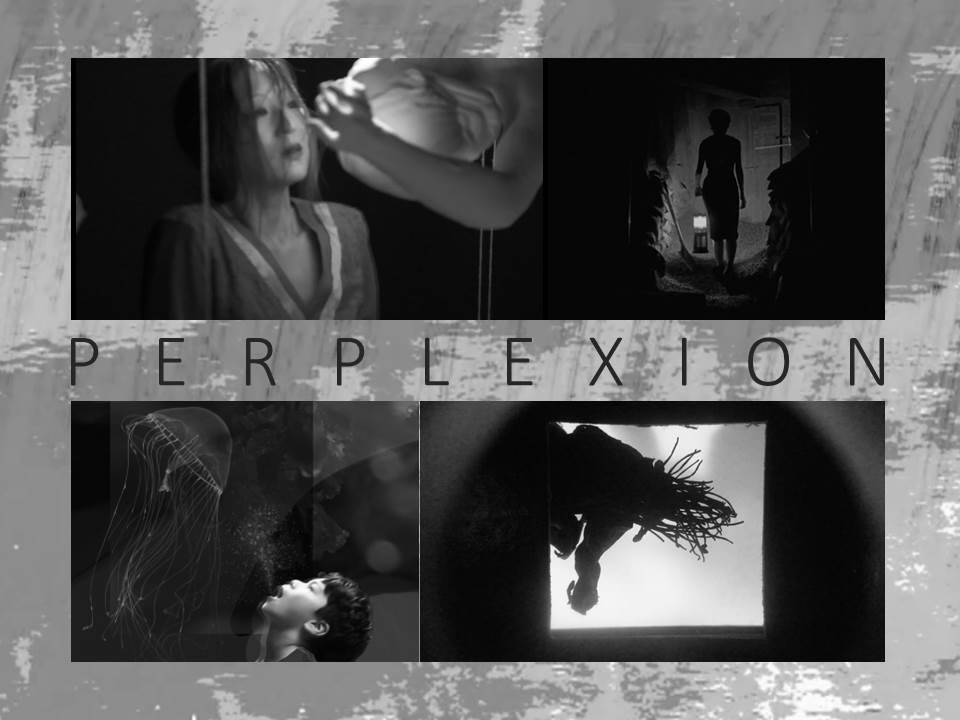
On 15 November 2015, we organised the PERPLEXION event in Tokyo, with contributions from Japanese video artists and the screening of (and live music performance with) our film “A Journey into the Land of the 4th Dimension”.
15 November 2015, 14h30 – 17h30, SAKAIKI (綜合藝術茶房 喫茶茶会記), 2-4 Daikyōchō, Shinjuku-ku, Tōkyo
venue website: gekkasha.modalbeats.com
event flyer: flyer PERPLEXION
FILM PROGRAMME
Black and Japanese Red 「黒と朱」
(2014, 10 min)
Koichi Watanabe
Cast – Motoko Hirayama / Concept and Planning – Koichi Watanabe / Director – KOMEI
RC
(2014, 15 min)
Satoshi Furuya + Makoto Kubota
Cast – Keisuke Oka, Akane Saito / Music – Kinako / Visuals – Satoshi Furuya & Makoto Kubota
Live music performance with the film screening by Kinako
objet a
(2010, 3 min 52)
Wataru Iwata
A Journey into the Land of the 4th Dimension
(2013, 55 min)
Gaston Meskens
A film byTRAGIC REALIST FICTION, featuring MELVIN SHAKUN (Gaston Meskens), MARY H. ACKER (Sarah de Graeve) and JAMES DYER (Mauro Pawlowski), inspired on the book “A Journey into the Land of the Fourth Dimension” by Gaston de Pawlowski.
Music – Mauro Pawlowski & Gaston Meskens / Visuals – Gaston Meskens
Live music performance with the film screening by Wataru Iwata (piano) and Gaston Meskens (guitars, sequencers)
Photos by Cécile Brice
« l’imbuvable source », « Transhumance », « La lune dans le caniveau », « âme en fuite», « l’échappée du temps », « séparé »
Photomontages realised after a series of interviews with Fukushima citizens housed in temporary residencies in the aftermath of the nuclear accident
live music with the film A Journey into the Land of the 4th Dimension, Wataru Iwata (piano), Gaston Meskens, synth, guitar